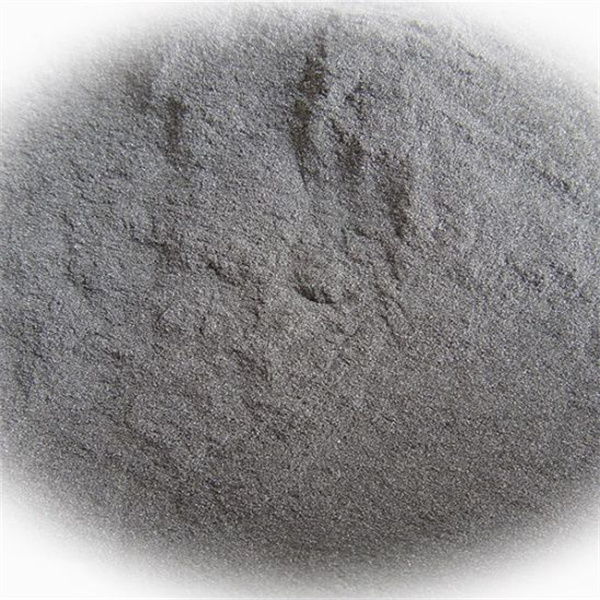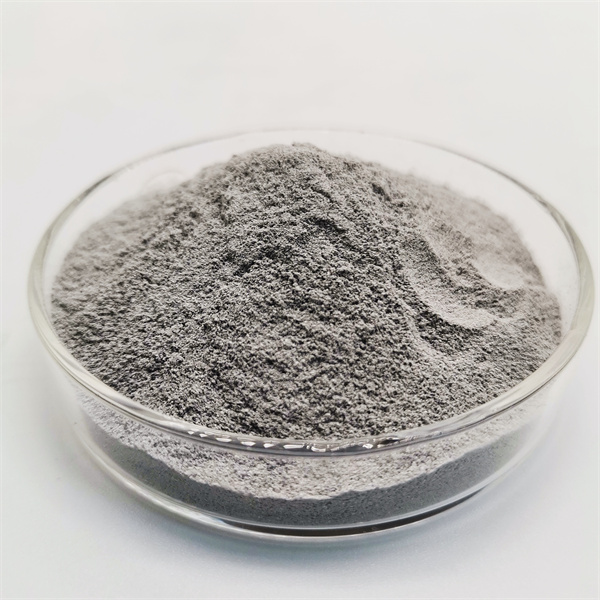金属粉末 是使用粉末床熔融技术进行增材制造的重要原材料。本指南概述了选择性激光熔融(SLM)和电子束熔融(EBM)等三维打印工艺中使用的各种金属粉末。
用于 AM 的金属粉末简介
使用金属粉末可以利用增材制造技术打印复杂的高性能金属零件。
所用材料
- 不锈钢
- 工具钢
- 钴铬合金
- 钛和钛合金
- 铝合金
- 镍超合金
- 铜合金
主要粉末特性
- 化学--纯度和成分
- 颗粒形状和形态
- 粒径分布
- 表观密度和敲击密度
- 流动性
- 粉末再利用
粉末生产方法:
- 气体雾化
- 水雾化
- 等离子雾化
- 电极感应熔化
- 羰基工艺
- 机械合金化

不锈钢粉
不锈钢粉通常用于印刷耐腐蚀部件:
合金类型
- 奥氏体钢,如 316L、304L
- 马氏体钢,如 17-4PH
- 2205 等双相钢
- 沉淀硬化,如 17-4PH、15-5PH
特点
- 高耐腐蚀性和抗氧化性
- 良好的强度和延展性
- 与高合金钢相比不易开裂
- 构建氛围等参数至关重要
应用:
- 化学和加工工业部件
- 船用部件
- 医疗植入物和设备
- 要求卫生的食品/制药工业部件
供应商: Carpenter, Sandvik, Praxair, Höganäs, LPW Technology
工具钢粉末
H13 等工具钢是印刷耐磨和高硬度零件的理想材料:
合金类型
- S7 等抗冲击钢
- D2 等冷作钢
- 热作钢,如 H13、H11
- 高速钢,如 M2
特点
- 硬度极佳,可达 60 HRC
- 高耐磨性
- 良好的韧性和抗热疲劳性
- 需要高温固溶退火
应用:
- 金属成型模具
- 切割工具和钻头
- 磨损件和轴承
- 高温工具
供应商: 山特维克、Erasteel、LPW Technology、Tekna Plasma Systems
钴铬合金
钴铬粉打印生物相容性植入物和牙科修复体:
合金类型
- 钴铬钼,如 Co-28Cr-6Mo
- CoNiCrMo 如 Co-35Ni-20Cr-10Mo
- 钴铬合金,如 Co-67Cr-28Fe
特点
- 优异的生物相容性和耐腐蚀性
- 高强度和硬度
- 铰接接头的耐磨性
- 具有挑战性的印刷适性和开裂倾向
应用:
- 牙套、牙桥和牙冠
- 骨科膝关节和髋关节植入物
- 颅骨板等固定装置
- 脊柱融合硬件
供应商: SLM Solutions、Carpenter、Arcam EBM
钛粉
钛粉可制成坚固、轻质的打印部件:
合金类型
- 非合金钛,如 Ti 1-4 级
- Ti-6Al-4V 合金
- Ti-6Al-7Nb 合金
- 其他 α + β 合金
特点
- 高强度重量比
- 卓越的耐腐蚀性
- 良好的高温性能
- 低密度 - 4.5 克/立方厘米
- 具有反应性,需要惰性气氛
应用:
- 航空航天和赛车零部件
- 医疗植入物和假肢
- 食品/化学工业部件
- 汽车零部件
供应商: AP&C、Tekna、卡彭特添加剂

铝合金
铝粉可打印轻质结构件或功能件:
合金类型
- AlSi10Mg
- AlSi7Mg
- AlSi12
- Scalmalloy® 和其他铝合金
特点
- 低密度 - 2.7 克/立方厘米
- 良好的强度和刚度
- 出色的导热性
- 易产生裂纹和残余应力
应用:
- 汽车和赛车零部件
- 航空航天和空间应用
- 热交换器
- 石膏等医疗设备
供应商:AP&C、山特维克、LPW Technology、ECKA Granules
镍超合金
镍超合金(如铬镍铁合金 718)可印刷高温零件:
合金类型
- 铬镍铁合金 718
- 铬镍铁合金 625
- Waspaloy
- 哈氏合金 X
特点
- 出色的高温强度
- 良好的耐腐蚀性和抗蠕变性
- 能够在高温压力下工作
- 加工难度大,易开裂
应用:
- 涡轮叶片
- 燃烧室部件
- 航天器部件
- 核工业/化学工业部件
供应商: 普莱克斯、卡彭特添加剂、通用电气添加剂
铜合金
CuCrZr 等铜合金可打印出高导电性部件:
合金类型
- 铜铬合金,如 CuCr1Zr
- 铜镍,如 CuNi2SiCr
- 青铜,如 CuSn10
特点
- 出色的导热性和导电性
- 良好的耐腐蚀性
- 抗菌性能
- 强度低于钢和镍合金
应用:
- 母线等电气元件
- 热交换器和散热器
- 波导和射频元件
- 医疗器械和固定装置
供应商: 山特维克、LPW 技术、Metalysis
技术规格
AM 中使用的典型金属粉末规格:
| 参数 | 典型值 | 测试标准 |
|---|---|---|
| 颗粒大小 | 10 - 45 μm | ASTM B214 |
| 粒子形状 | 球形 | ISO 13322-2 |
| 流量 | 25 - 35 秒/50 克 | ASTM B213 |
| 表观密度 | 2 - 5 克/立方厘米 | ASTM B212 |
| 水龙头密度 | 4 - 8 克/立方厘米 | ASTM B527 |
| 剩余氧气 | < 300 ppm | 内部方法 |
| 残余氮 | < 50 ppm | 内部方法 |
| 残碳 | < 30 ppm | ASTM E1019 |
粉末生产方法
1.气体雾化
- 高球形粉末
- 5-100 μm 的小颗粒尺寸
- 用于钛等活性合金
2.水雾化
- 粉末形状不规则
- 较大颗粒可达 300 μm
- 降低工艺成本
3.等离子体雾化
- 可控颗粒形状
- 亚微米至 150 μm 尺寸
- 高纯度粉末
4.机械合金化
- 元素混合和研磨
- 定制合金的成本效益
- 大颗粒尺寸
供应商和定价
| 供应商 | 材料 | 价格范围 |
|---|---|---|
| LPW 技术 | 工具钢、不锈钢 | $50 - $120/kg |
| AP&C | 钛合金、铝合金 | $70 - $450/kg |
| 山特维克 | 不锈钢、镍合金 | $45 - $250/kg |
| 普莱克斯 | 超级合金、钛 | $150 - $600/kg |
| 木匠添加剂 | 工具钢、CoCr、不锈钢 | $80 - $300/kg |
- 不锈钢粉每公斤成本 $45-$120
- 钛合金粉每公斤成本 $150-$450
- 超合金和工具钢每公斤成本 $250-$600
价格取决于合金、质量、批量大小和购买协议。
粉末处理和储存
为防止污染,正确处理粉末至关重要:
- 使用专用的粉末筛分区
- 确保惰性气氛手套箱和料斗
- 使用导电容器消除静电荷
- 将所有设备和运输容器接地
- 避免与油、水或氧气接触
- 将粉末储存在惰性气体环境下的密封容器中
- 控制储存期间的温度和湿度
- 操作时遵守安全预防措施,如个人防护设备
适当的储存可延长粉末的重复使用寿命。
粉末筛分
筛分可确保颗粒大小一致:
好处
- 清除导致缺陷的卫星微粒
- 分解团块
- 提高流动性和填料密度
- 减少可回收性问题
- 清除外来污染物
程序:
- 用 20-63 μm 左右的筛网筛粉
- 使用旋转筛分或振动筛分
- 在惰性气氛下进行筛分
- 记录剩余粉末重量百分比
筛分可确保理想的粉末铺展性,从而提高零件质量。
安装和调试
安装带粉末系统的金属 AM 打印机包括
- 清洁设备表面,避免污染
- 惰性气体连接泄漏测试
- 检查激光或电子束功率
- 装载和测试粉末再喷涂系统
- 集成冷却器、排气和维修连接
- 安装监控和安全传感器
- 验证粉末筛分和处理系统
- 校准构建板水平度
- 试印样品部件并验证质量
供应商提供安装和调试支持。
运行和最佳做法
打印机操作指南:
- 定期进行泄漏检查和惰性气体纯度测试
- 预处理粉末,确保质地一致
- 针对新材料调整层厚度和激光参数
- 密切监控熔池并控制部件温度
- 使用测试打印验证关键尺寸
- 监测粉末状态,仅在建议范围内重复使用
- 定期维护光学仪器、光束传输系统和粉末重涂装置
人员安全:
- 使用适当的个人防护设备,如呼吸器和手套
- 避免接触活性金属粉末
- 在惰性气氛下妥善处理废粉
部分后期处理:
- 使用适合合金和应用的固溶热处理和时效温度
- 在热加工过程中控制斜率,以消除应力
- 必要时对复杂部件进行热等静压,以提高密度
- 应用数控加工和抛光等精加工步骤
维护和检查
定期维护活动:
每天:
- 检查镜面、透镜、窗户等光学元件是否损坏
- 清洁构建室和粉末处理系统
- 检查惰性气体含量,必要时重新充气
- 测试筛分机制和粉末重涂机
每周
- 校准传感器和仪器
- 检查紧固件、电气端子和接地
- 润滑并检查电机和驱动器等运动部件
- 监测过滤器的更换情况
每月:
- 使用氦气对惰性气体系统进行泄漏测试
- 检查火灾探测器等安全装置
- 检查热电联产系统的健康状况
每年一次
- 与设备供应商安排预防性维护
- 校准激光功率计
- 更换过滤器和消耗品
需要按照供应商的指导原则进行维护,以保持部件质量和设备健康。
选择合适的金属印刷系统
选择金属 AM 机器时应考虑的因素:
1.生产要求
- 要生产的部件类型
- 根据部件特性确定所需材料
- 生产量要求
- 所需的精度和表面光洁度
2.打印机规格
- 支持的材料和参数
- 建筑尺寸和速度
- 精度和可重复性
- 惰性气氛管理
- 自动化功能和控制
3.粉末处理系统
- 集成或独立系统
- 筛分、喂料、储存和再利用能力
- 钛等反应性材料的容器
- 避免污染的监测功能
4.遵守标准
- ASTM F3301 等行业标准
- 制造商质量认证
- 符合安全标准
5.供应商证书
- 在 AM 行业有良好的业绩记录
- 本地销售和技术支持能力
- 提供的维护合同和服务
- 操作员培训计划
- 总体拥有成本
利用这些标准对需求进行全面分析并对机器产品进行比较,最终选择出符合生产需求的理想 3D 金属打印系统。
金属 AM 的优缺点
优势
- 易于印刷的高几何复杂性
- 缩短生产功能部件的时间
- 与减法工艺相比,减少了浪费
- 直接从 CAD 进行单次设置生产
- 轻量化和部件整合潜力
- 利用工程合金提高性能
- 定制和大规模定制功能
缺点
- 机器和材料成本高
- 需要额外的后处理步骤
- 根据建造舱室大小进行限制
- 控制内部缺陷可能具有挑战性
- 与锻造相比,材料性能可能会有所不同
- 由于表面光洁度的限制,可能需要进行表面处理
- 培训和专业知识要求
常见金属 AM 问题的故障排除
| 缺陷 | 可能的原因 | 纠正措施 |
|---|---|---|
| 孔隙率 | 工艺参数不当 | 优化激光功率、速度和舱口间距 |
| 粉末污染 | 使用新鲜过筛粉末,改善粉末处理 | |
| 扫描轨道之间重叠不足 | 调整光束聚焦大小和重叠 | |
| 裂缝 | 热应力过大 | 优化预热,用加热器控制冷却速度 |
| 容易开裂的材料 | 改变方向以减少压力 | |
| 来自大气层的污染 | 确保高纯度惰性气氛 | |
| 翘曲 | 加热或冷却不均匀 | 优化扫描模式并将部件固定在构建板上 |
| 表面粗糙 | 部件温度过低 | 提高预热温度 |
| 熔池流动性不佳 | 调整功率和其他参数 | |
| 受污染的粉末 | 使用新鲜粉末,提高操控性 |

常见问题
问:哪些金属合金粉末可用于 AM?
答:常见的有不锈钢、工具钢、钛合金、镍超合金、铝合金、钴铬合金和铜合金。
问:使用的粉末颗粒大小的典型范围是什么?
答:对于 PBF-LB/M 工艺,10-45 微米很常见,20-45 微米左右分布更紧密。
问:金属粉末的使用寿命有多长?
答:在理想的氩气储存条件下,许多合金可以使用 1-2 年。重复使用的寿命较短,根据合金的不同为 20-100 次打印。
问:金属 AM 部件需要哪些后处理步骤?
答:通常需要去除支撑、热处理、表面精加工(如 CNC 加工、抛光和涂层)。
问:如何处理钛和铝等活性金属粉末?
答:需要在惰性氩气环境下进行专门的粉末处理,以防止氧气吸附。
问:常见的粉末污染风险有哪些?
答:暴露在大气中导致氧气或氮气吸附。加工或磨损产生的金属颗粒。油和湿气。
问:金属粉末的合格标准是什么?
答: ASTM B214、ASTM B812、ASTM F3049、ASTM F3301 和 MPIF 标准。
问:为什么粉末筛分很重要?
答:它能破碎结块,去除卫星,并提供最佳和一致的粉末尺寸,以获得高密度和表面光洁度。
结论
金属粉末可用于快速成型制造先进的高性能部件,其性能在某些情况下优于锻造材料。从不锈钢到超合金和钛等各种合金都可以粉末形式提供,可满足航空航天、医疗、汽车和一般工业的苛刻应用要求。随着合金、质量标准、生产工艺、机械和零件性能的不断改进,金属 AM 正逐渐成为全球的核心生产技术。然而,要充分发挥其优势,工艺和材料专业知识以及严格的质量控制是必不可少的。随着经验的不断积累,金属自动成型技术将提供前所未有的能力,以更大的设计自由度和更短的交付周期制造复杂的定制零件。
